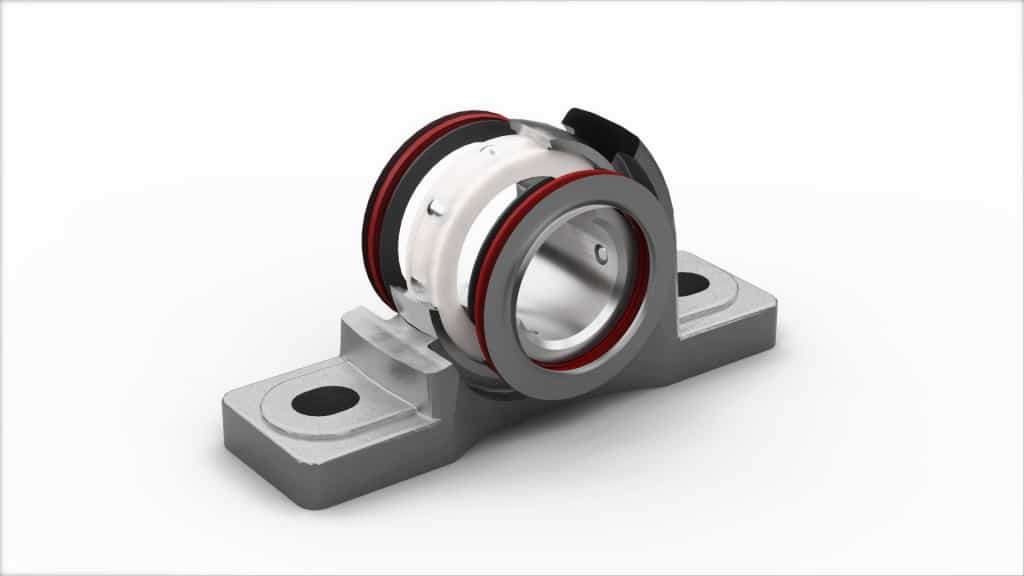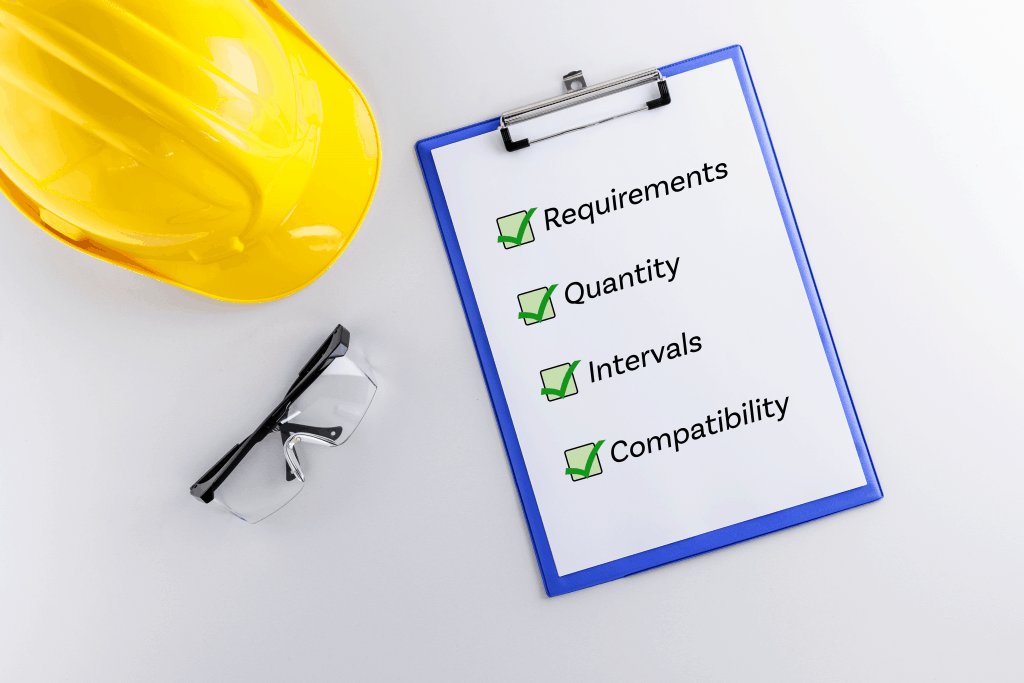Single-point Lubricator: How to Maximize Bearing Reliability

Bearings require precise lubrication practices to maximize their operational life. Manual greasing is and always has been easy to perform incorrectly. The greasing process contains many variables that, when executed improperly, lead to premature bearing failure.
Many applications and industries operate on the function and reliability of bearings. Therefore, whichever lubrication system that you implement should maximize the reliability of your bearings.
What is single-point lubrication?
A single-point lubricator (SPL) is a greasing accessory that attaches directly to bearings to deliver lubrication over set amounts of time. They are designed to deliver grease more precisely and consistently than manual lubrication.
One bearing study shows that lubrication-related issues lead to approximately 80% of premature bearing failures. With that in mind, the important question is: What needs to be accounted for in regards to a single-point lubricator to prevent these premature failures and maximize bearing operational life?
How does a single-point lubricator work?
Nearly 90% of bearing applications rely on grease for lubrication. Issues like contamination, incorrect viscosity, incompatibility, and over or under-greasing contribute to most lubrication-related bearing failures.
Though they don’t eliminate them completely, SPLs reduce the potential for these issues. SPLs need their lubricant refilled to function properly. Without maintenance technicians strictly following a relubrication schedule, lubricators can become forgotten and run dry.
Potential Errors to Avoid
Mistakenly using an incompatible grease or allowing contaminants to enter the lubricator during lubricant refills is an unfortunately common error. Any contaminant introduced to the bearing’s interior circulates with the grease, inevitably causing damage to the rolling elements and leading to premature failure.
While grease is not at fault for premature bearing failures, using SPLs requires regular, diligent, and careful maintenance to prevent potential mistakes during lubrication.
Single-point lubricator maintenance
SPLs allow technicians to extend the time between their maintenance with the expectation that bearings will continue to receive the grease they require.
Keeping the power on
SPL delivery method falls into two camps – electromechanical and electrochemical. Electromechanical SPLs rely on a power source to deliver grease. As long as the power source continues to function, these particular lubricators work well in all settings and applications. The main concern here is monitoring battery life. If power stops, so will the grease flow.
Regulating temperature
Electrochemical SPLs create an internal chemical reaction, generating gas pressure to deliver grease. Their main drawback is temperature fluctuation. When temperatures are higher, the chemical reaction creates more pressure, increasing the flow of grease – which is also thinned by these temperatures. Low temperatures create less pressure and grease remains thicker — two factors that combine to result in a slower flow of grease.
Keeping everything on schedule
Another maintenance issue for SPLs? Limiting all bearing bore sizes, rotations per minute, application environments, and operating temperatures into a finite set of grease delivery quantities.
Most major bearing manufacturers have several relubrication intervals dependent on the above factors, some with twice as many options as available with SPLs. Even if a majority of bearings do fit within these intervals, what about the remaining bearings? Over or under-lubrication may be the result.
Inspecting a single-point lubricator or grease lines for damage
SPLs reduce the frequency of active maintenance required of greased bearings. You can set these systems to work behind the scenes, with the few caveats mentioned above.
Many SPLs connect directly to the housings, while some utilize grease lines to increase accessibility or keep technicians safer. However, it doesn’t take much to damage a grease line, and SPLs – some of which are of plastic construction – are significantly less robust than a bearing housing.
SPLs create easier access to lubrication for bearings that are difficult to reach. If a manually lubricated bearing happens to fail in a location like this, it becomes necessary to shut down production, which may very well cause production losses. Although, if the SPL or its connection to this same bearing were to fail, the complication remains unaddressed.
To ensure that grease is still flowing to the bearings, it becomes necessary to visually inspect the lubricators and lines frequently.
The costs of relubrication
Grease lubrication represents an ongoing cost, one that is extremely difficult to reduce and may even increase over time. Bearings that have compromised their seals due to over-lubrication require even more grease to purge contaminants.
SPLs are efficient with grease. The likelihood of blowing a seal is reduced, and they don’t deviate from the intervals they’ve been set to lubricate at. Aside from the temperature or damage issues mentioned above, SPLs are more-or-less dependable. And while this is a net positive for reliability, costs remain a factor.
Many of the smaller SPLs are single-use units, with either the electrochemical reaction running its course or batteries expiring. This represents another ongoing cost, in addition to the lubricant. Larger, more comprehensive systems can be quite expensive, though their reliability does correlate with cost.
Of course, maintenance represents the biggest cost to any lubrication system. The hours spent by technicians maintaining single-point lubricators and the associated accessories can become quite expensive, especially over time.
Single-point lubricator alternatives
Both single-point lubricators and solid lubrication decrease variables within the lubrication process, though they accomplish this with varying degrees of effectiveness. Solid lubricants are a single-point lubrication system with distinct and unique advantages when it comes to maximizing bearing operational life. With solid lubricants, the lubricant is stored inside the bearing – the place that is the most effective for lubrication, and the most protected.
Eliminate the need for relubrication
Bearings with solid lubricants have effectively stripped lubrication down to its most basic function, eliminating the need for maintenance. The oil, uncontaminated and contained within the polymer, is available whenever motion begins. No more relubrication. Ever!
Make maintenance less complicated
Bearings with solid lubrication decrease the complexity of machinery maintenance, eliminating the processes that lead to so many premature failures. And with nothing to damage but the housing itself, you can rest assured these bearings will perform in any environment. The polymer reliably delivers oil, allowing you to focus on what really matters: production.
Any move away from the process of manual greasing is beneficial for bearing life. It’s clear that some systems go further than others in improving bearing reliability, thereby reducing failures and prolonging production time.
Seeking an improvement over your current bearing lubrication system? Lubrilife is ready to exceed your expectations.
Sort by category: Lubrication, Selection & Design
Sort by topic: Bearing Grease, Lubrication System, Mounted Bearing




